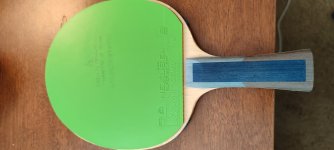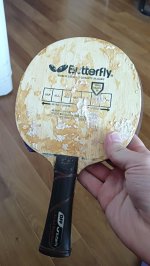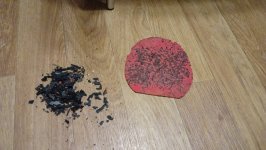An uneven playing surface is an unpredictable and inconsistent playing surface.
With fresh uncured glue, you can clamp or stack some books on the rubber/blade while drying and it'll slowly but surely even out.
With old glue, you're going to get some unevenness after you've pulled the rubber from the blade. Even with a sealed surface and DHS No. 15 glue (the best I've found for not leaving any glue on the blade), there have been only 1 or 2 times where I've peeled the rubber off, examined the rubber, and found the glue layer acceptably smooth.
There's an argument the fresh glue will fill in the gaps left by the old glue, but my experience is that I see more bumpiness through the topsheet when I've reglued without removing the old glue.












